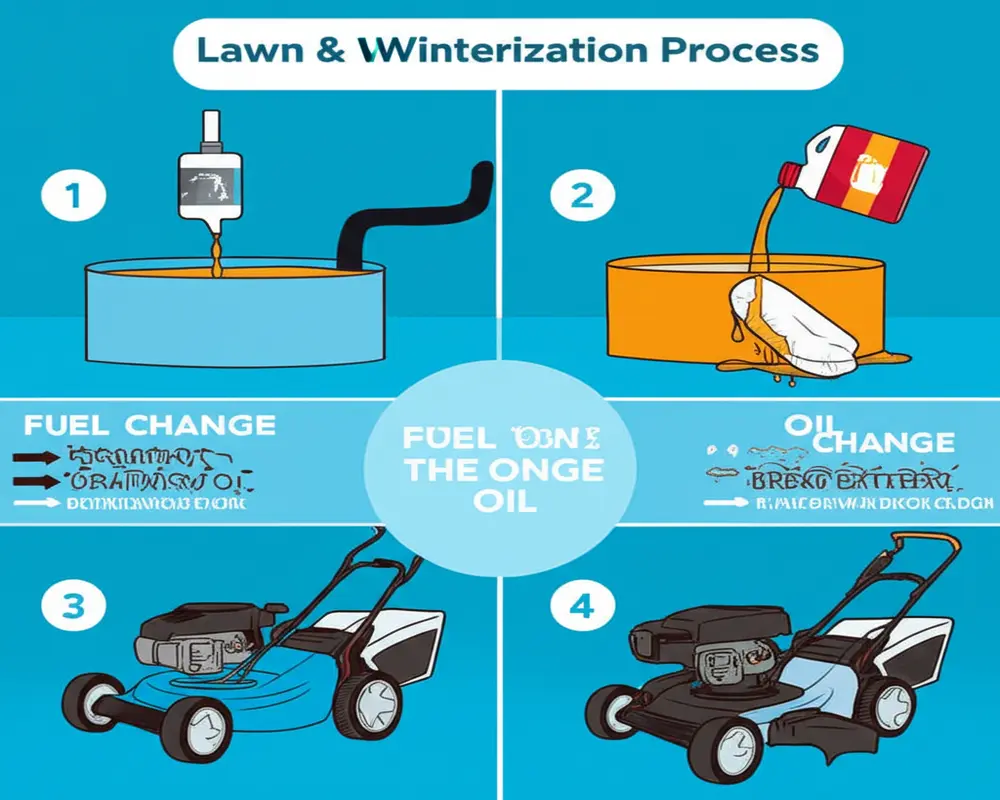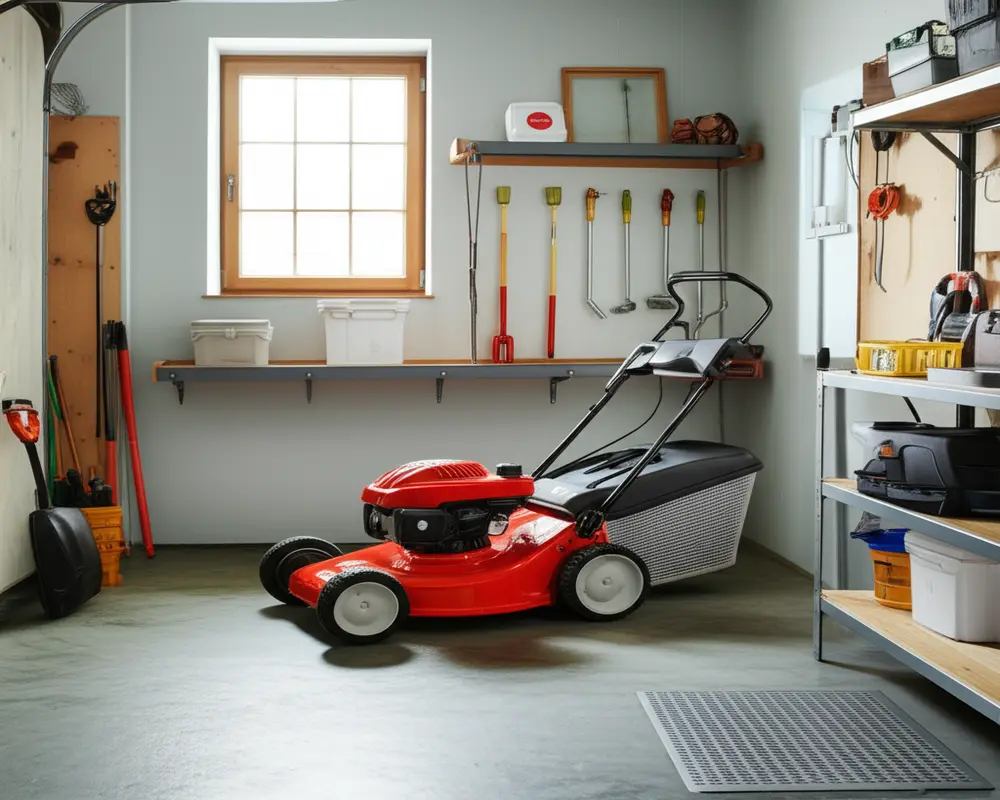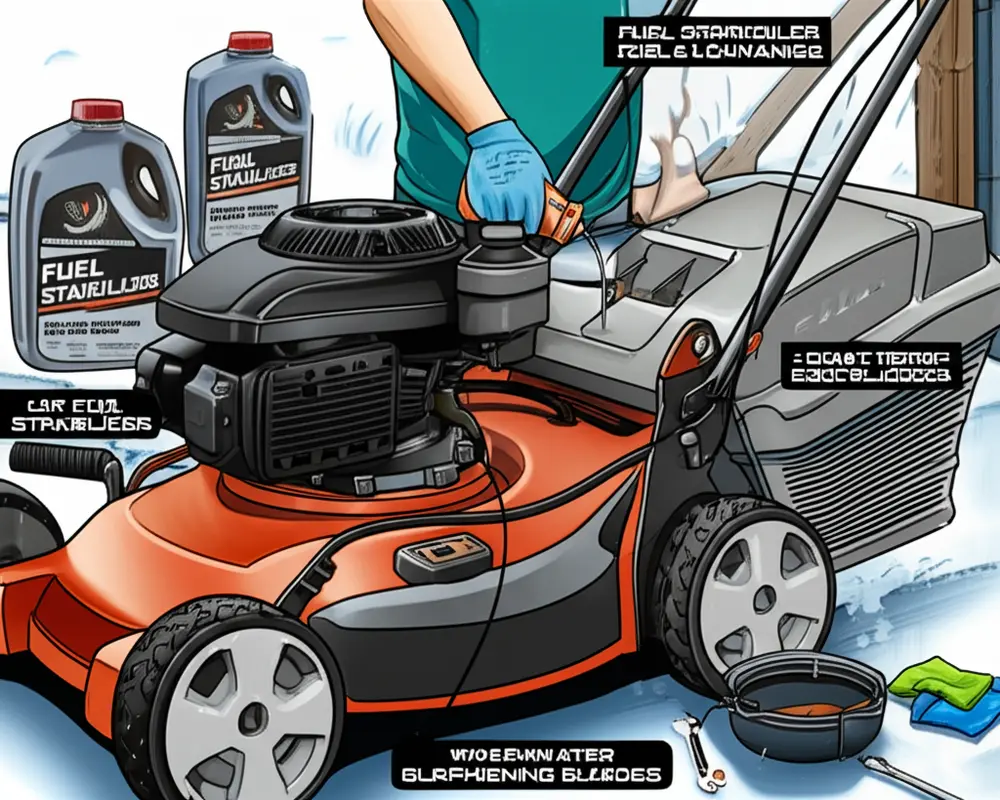Lawn Mower Winterization: Ultimate Guide for 2025
Lawn mower winterization is an essential process that protects your mower from damage during the cold months, prevents costly repairs, and ensures it’s ready for spring. As the seasons shift, taking the right steps to prepare your mower for winter can extend its lifespan and maintain its performance. This comprehensive 2025 guide covers everything from safety precautions to storage tips, tailored for all common lawn mower types, including gas-powered, electric, and riding mowers.
Thank you for reading this post, don't forget to subscribe!I. Introduction: Why Winterization is Crucial for Your Lawn Mower
Winterizing your lawn mower is not just about putting it away; it’s a preventive measure that safeguards the engine and components from harsh conditions. Avoiding winter damage means fewer repairs come spring and a mower that starts easily when you need it most. Proper winter care can extend the life of your mower significantly, saving money and hassle.
This guide walks you through the necessary steps applicable to most lawn mowers, ensuring you have expert advice whether you own a push mower, riding mower, or electric model.
II. Safety First: Essential Precautions Before You Start
Before beginning any maintenance on your mower, take these safety measures seriously. Disconnect the spark plug or remove the battery to prevent accidental starts. Allow the engine to cool completely to avoid burns, and wear personal protective equipment such as gloves and eye protection.
Perform winterization in a well-ventilated space to avoid inhaling fumes, especially from fuel. Always consult your mower’s owner’s manual for model-specific instructions and warnings.
III. Tools & Supplies Checklist
Prepare all necessary tools and supplies to streamline the winterization process. You will need fuel stabilizer, a funnel for pouring fluids, fresh engine oil, a replacement spark plug, air filter, and oil filter if you have a riding mower. Essential tools include a spark plug wrench, drain pan, cleaning supplies, blade sharpening tools, grease gun, and a battery tender for electric or riding mowers.
Consider rust inhibitors and a vacuum to clean debris from the mower deck and engine area effectively.
IV. Step-by-Step Winterization Guide for Gas-Powered Mowers
A. Fuel System Care
Fuel degradation is one of the main causes of carburetor and engine problems in spring. Using a fuel stabilizer for mowers prevents this. Add the stabilizer to the fuel tank and run the engine for five to ten minutes to circulate the treated fuel through the system. Alternatively, you can drain the fuel completely by running the mower until the tank and carburetor are empty, but this requires careful handling to avoid spills and hazards.
B. Change Engine Oil
Old oil contains contaminants that promote corrosion over the winter. Warm up the engine to help the oil drain completely, then replace the oil filter if your mower has one. Refill with fresh oil according to the manufacturer’s specifications and check the oil level.
C. Replace Spark Plug
A clean, properly gapped spark plug ensures reliable ignition in the spring. Remove the old plug, check the gap, and install a new one securely.
D. Inspect/Replace Air Filter
The air filter keeps debris from entering the engine. Remove the old filter, clean the housing thoroughly, and either replace the filter or clean it if reusable.
E. Clean Mower Deck & Blades
Remove grass clippings and dirt from the mower deck to prevent rust and corrosion. Wash the deck, then sharpen and rebalance the blades for efficient cutting. Apply rust inhibitors to metal surfaces and blades to protect against moisture damage.

F. General Cleaning & Inspection
Clean the exterior of the mower, inspect belts and cables for wear, and check tires for proper inflation. Lubricate all moving parts and tighten any loose hardware to maintain optimal performance.
G. Battery Maintenance (Riding & Electric Start Mowers)
Disconnect the battery and clean the terminals to prevent corrosion. Store the battery in a cool, dry place and use a smart charger or battery tender to maintain charge throughout winter. Proper battery care is crucial for riding mowers and electric start models.

V. Mower Type Specific Considerations
Electric mowers require removal and storage of the battery fully charged to avoid battery degradation. Zero-turn mowers have more complex components such as hydraulic systems that also need lubrication and inspection during winterization.
VI. Choosing the Right Storage Location
Proper storage is essential to protect your mower from moisture and pest damage. The ideal location is dry, well-ventilated, and sheltered from weather elements. Garages, sheds, or covered outdoor areas work best.

VII. Common Winterization Mistakes to Avoid
Skipping the use of a fuel stabilizer or storing old oil can cause engine problems in spring. Failing to disconnect the spark plug or battery increases the risk of accidental starts. Avoid storing your mower in damp or uncovered areas which promotes rust and corrosion. Neglecting battery care can lead to dead batteries and inconvenience.
VIII. Troubleshooting: If Your Mower Won’t Start in Spring
If your mower struggles to start after winter, check the freshness of the fuel, condition of the spark plug, and air filter cleanliness. For electric or riding mowers, verify the battery charge. If problems persist, carburetor cleaning or professional inspection may be necessary.
IX. When to Consider Professional Winterization Services
Complex repairs, lack of proper tools or time, or preference for expert care are good reasons to seek professional winterization. Experts can perform thorough inspections, tune-ups, and repairs that extend mower life.
X. Frequently Asked Questions
- Can I use car engine oil for my lawn mower?
- It is best to use oil recommended by your mower’s manufacturer, often SAE 30 or 10W-30. Car engine oil may have different additives not suitable for small engines.
- How long does a fuel stabilizer last?
- Most fuel stabilizers keep gasoline fresh for up to 12 months when properly mixed and stored.
- Do electric mowers need winterization?
- Yes, especially battery care and proper storage to prevent damage and battery degradation.
- What if I forgot to winterize my mower?
- It’s not ideal, but you can perform winterization later. Expect some extra maintenance in spring such as carburetor cleaning and oil changes.
- Can I store my mower outside under a tarp?
- Storage outdoors under a tarp is not recommended as moisture can accumulate, causing rust and mechanical issues.
XI. Conclusion: Ready for a Fresh Start Next Spring!
Winterizing your lawn mower protects your investment, ensures reliable performance, and reduces repair costs. The steps outlined here cover all essential aspects of winter care, from fuel system treatment to proper storage. Regular maintenance and careful preparation allow you to enjoy a hassle-free spring mowing season and keep your mower running smoothly for years to come.
For ongoing maintenance tips and troubleshooting advice, explore related guides such as lawn mower maintenance and garden tool care to enhance your gardening experience.
Take action today to winterize your mower properly and enjoy peace of mind all winter long.
For additional expert insights on winterizing lawn equipment, visit Bob Vila’s guide, The Home Depot’s winterization tips, and This Old House lawn mower winterization advice.

